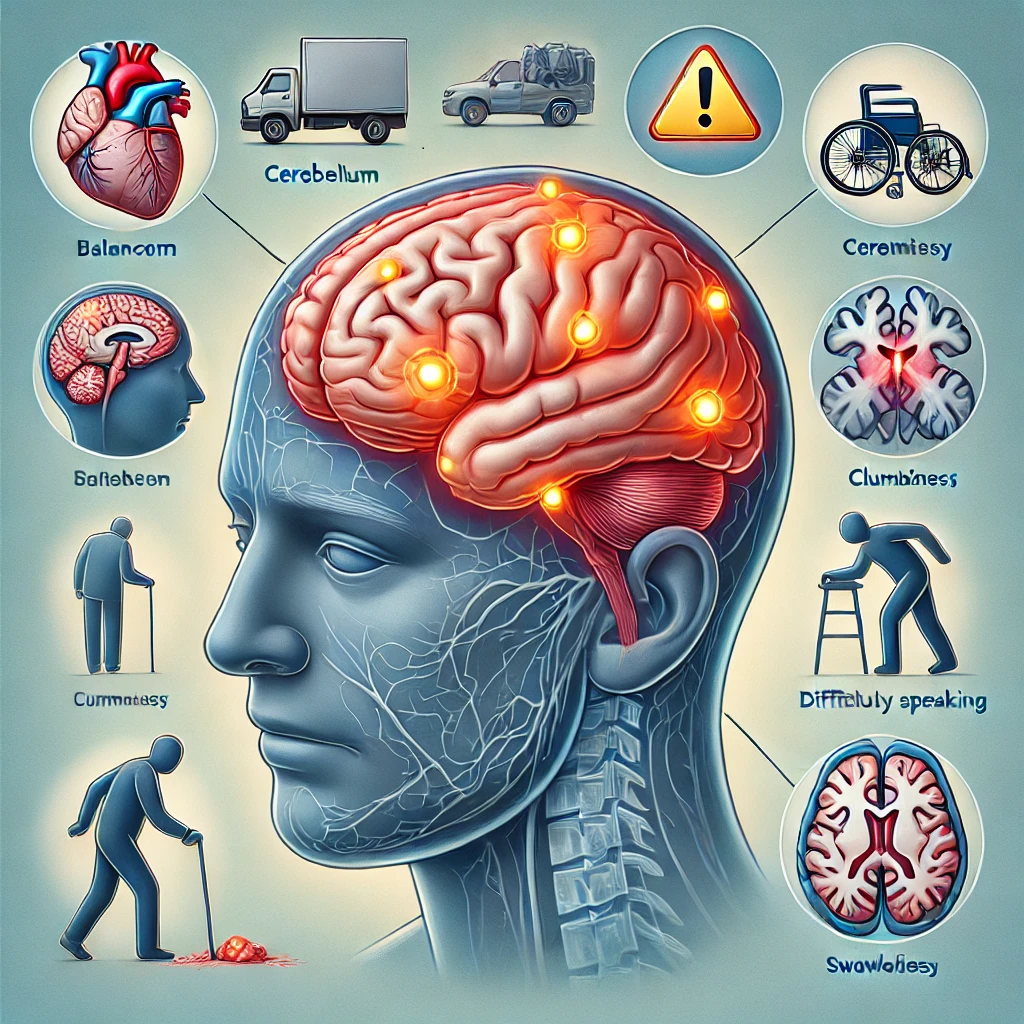Understanding Nervous System Disease: Ataxia: Balance and coordination issues can arise from various causes, such as head injuries, migraines, alcohol use, ear infections, medications, or nutrient deficiencies like low iron or vitamin B12 levels. Aging and certain medical conditions, including diabetes, arthritis, Parkinson’s disease, multiple sclerosis, neuropathy, and thyroid disorders, can also contribute to these challenges. Such balance difficulties may indicate a condition called ataxia.
What is Ataxia?
Ataxia refers to problems with balance and coordination but can also exist as a degenerative neurological disease. According to Andrew Rosen, CEO of the National Ataxia Foundation, there are multiple types of ataxia, including cerebellar, sensory, vestibular, Friedreich’s ataxia, and hereditary forms.
Common symptoms include:
- Difficulty with balance and walking
- Clumsiness
- Vision and speech impairments
- Swallowing challenges
- Emotional regulation issues
Dr. Liana Rosenthal of Johns Hopkins University highlights how these symptoms can disrupt everyday activities like walking, communicating, and reading.
Causes of Ataxia
The cerebellum, located at the back of the skull, is responsible for balance and coordination. Damage to this area often results in ataxia. Other contributing factors include poor sensation in the feet, vision impairments, inner ear problems, muscle weakness, or joint issues.
Dr. Susan Perlman, a neurology professor, explains that ataxia may stem from strokes, cancer, autoimmune diseases, alcohol misuse, and degenerative brain conditions. Hereditary ataxias, such as Friedreich’s ataxia, are genetic and passed down from parents. In some cases, the cause of ataxia remains unknown, referred to as idiopathic ataxia.
Treatment and Management
When ataxia is a symptom of another condition, addressing the underlying issue or discontinuing the responsible medication often resolves the symptoms. However, when ataxia is a standalone disease, treatment focuses on enhancing the patient’s quality of life through personalized care plans.
Therapies that may help include:
- Physical and occupational therapy
- Speech and language therapy
Recent medical advances bring hope, such as a newly approved treatment for Friedreich’s ataxia. Dr. Rosenthal expresses optimism about the development of additional therapies for other forms of ataxia.
Ongoing research continues to shed light on the causes and potential treatments for this complex condition, offering hope to those affected.

